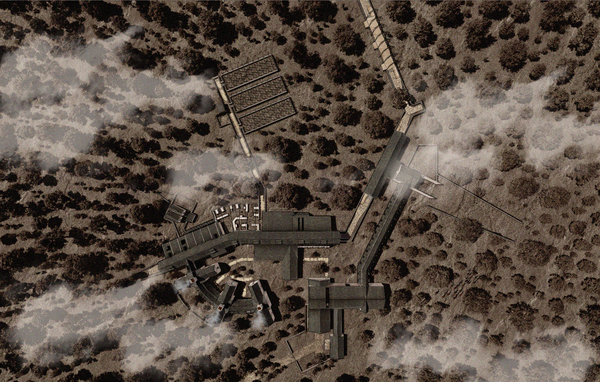Food Yard
Set against the backdrop of a climate crisis, Food Yard proposes a sustainable parallel to the existing British farming infrastructure – improving food security by providing an alternate to mass-scale farming. At the root of the project is Silvopasture - an ancient practice of farming integrating the pasteurisation of livestock in forested areas – primarily used to combat methane emissions and improve carbon sequestration. Additionally, Not only beneficial to both forest and livestock health, Silvopasture also offers the opportunity for foraging and an improved biodiversity net gain.
Using architectural interventions as a mechanism to increase afforestation networks, the scheme itself encourages people to visit the site by allowing them to ‘Walk the yards’. They are taken on a ‘journey’ which follows the production of their food, first entering the pasture where they see the livestock resting and onsite gardens growing local produce, to then passing the slaughter house. Here they are shown the reality of the abattoir, no longer ignored behind a windowless wall (this transparency also encourages an improved animal welfare). The consumer is then encouraged to buy the food grown, forested and produced on site at the ‘market’, with which they can then cook and eat themselves at the onsite hearths. This promotes the consumer to have a stake in their food, highlighting the importance of the forest as a food source and therefore the importance of climate action in forest regrowth.
The project’s ideals follow contextual vernacular, both in architectural representation and environmental considerations. The scheme presented is specific to its site, utilising a Cumbrian farmyard typology from material use such as slate and limestone; to building organisation around a courtyard – lineated in the case of ‘Food yard’. The scheme has potential for expansion, with each Food yard adapting to its locality – with changes ranging from the buildings’ form and materials to the food they farms.


